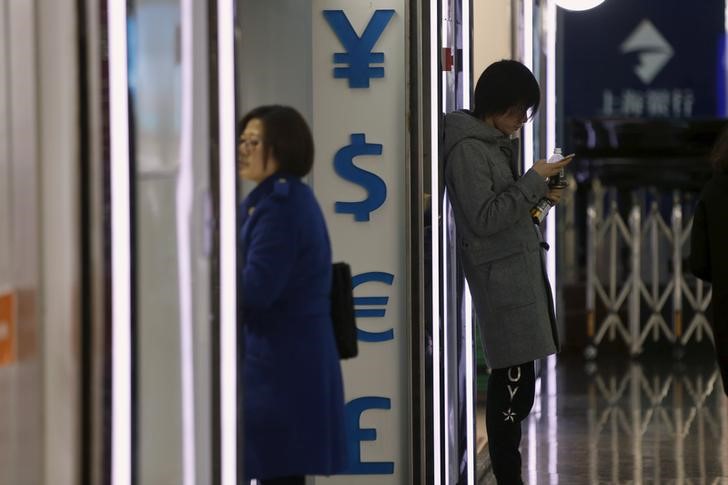(Bloomberg) -- China appears to be propping up the yuan just as it prepares to restart trade negotiations with the U.S.
After falling to a one-year low, the offshore yuan -- one of the world’s weakest currencies in recent months -- on Thursday surged the most since January 2017 as cash supply dwindled and the central bank set its daily fixings at stronger than expected levels. That came as the Ministry of Commerce said it would send a delegation to the U.S. later this month, stoking hopes of a revival of talks that stalled in June.
“China and the U.S. are finally sharing common interests on the yuan: while Washington always wants a stronger currency, Beijing may think the exchange rate has fallen enough and needs to stabilize,” said Zhou Hao, a senior economist at Commerzbank AG in Singapore. “We will see intense defense if the yuan moves closer to seven per dollar.”
The New York Times, citing an unidentified person briefed on the plans, said Friday the U.S. Treasury Department will seek to pressure China to strengthen the yuan at the trade talks this month.
President Donald Trump has accused China of keeping its currency artificially weak to garner a trade advantage, saying on television channel CNBC last month that the yuan is “dropping like a rock,” to America’s detriment. The yuan has fallen more than 8 percent versus the dollar since March as the People’s Bank of China eased monetary policy to support a slowing economy while trade friction with the U.S. worsened. But Chinese policy makers worry a disorderly drop could trigger capital outflows and threaten financial stability.
“China wouldn’t want the yuan to slide too quickly before important meetings, and that could be one of the reasons why the policy makers moved to support the currency,” said Nathan Chow, senior economist at DBS Bank Hong Kong Ltd. “The yuan will still face pressures as there are many uncertainties with the low-level trade talks. I don’t think China will bend to the U.S. that easily.”
Here’s a list of news that has been supporting the yuan lately:
- The PBOC set its daily reference rates, which restrict the onshore yuan’s moves by 2 percent on either side, stronger than the average forecasts of traders and analysts surveyed by Bloomberg for seven days in a row
- The Hong Kong branch of a Chinese state-owned bank moved to squeeze the liquidity of the offshore yuan in the forwards market Thursday
- The PBOC banned commercial banks from using interbank accounts to deposit or lend yuan offshore through the nation’s free-trade zone channels, Reuters reported Thursday
- The central bank urged the banks to prevent any “herd behavior” and momentum-chasing moves in the foreign-exchange market last week
- China has made it more expensive for traders to bet against the yuan by levying a 20 percent reserve requirement on banks’ purchase of foreign-exchange forwards
The offshore yuan was little changed at 6.8626 per dollar as of 4:44 p.m. in Hong Kong after swinging between a loss of 0.21 percent and a gain of 0.30 percent. The onshore rate rose 0.17 percent. One-year interbank borrowing costs of the yuan in Hong Kong -- known as Hibor -- surged 55 basis points, the most since December 2016, to 4.26 percent, reflecting tighter liquidity.
Measures to tighten cash supply are nowhere near as aggressive as in the aftermath of a shock yuan devaluation three years ago, said Sue Trinh, head of Asia foreign-exchange strategy at Royal Bank of Canada in Hong Kong. The offshore yuan’s overnight Hibor surged to a record 66.8 percent in early 2016. It was at 2 percent on Friday.
